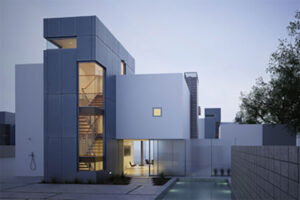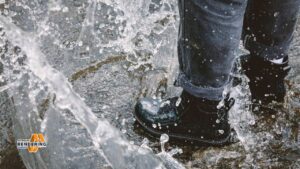Breeze blocks, or masonry blocks, are a sturdy and inexpensive material to build with. Painting breeze blocks will increase their visual appeal but also add a layer of protection to them. The following is a guide on how to render breeze blocks, including surface preparation, suitable materials, and application methods.
Preparation is Key
It is extremely important to have proper preparation to guarantee good rendering. This involves washing the blocks, brushing the blocks, and application of a bonding agent, plus the placing of mesh to relevant sections.
Cleaning the Blocks
Clean the breeze blocks of dirt, dust, and other debris to begin. This is best done with a stiff brush and clean water. For persistent grime or algae, enlist a power washer with a gentle cleaner. Make sure the blocks are dry before moving on.
Applying a Bonding Agent
A bonding agent is used to ensure the bond between the breeze blocks and the render. Brush or roll a thin, uniform coating of bonding agent. BE SURE THE BONDING ADMIXTURE IS SUITABLE TO THE BLOCKS AND RENDER MATERIAL. Apply the first coat of render when the bonding agent starts to get tacky. This will help the render adhere to the wall. A few inquire, can you render on block work without some kind of bonding agent? It’s something that you can do, but it is generally not advisable for long-term durability.
Installing Mesh
Apply reinforcing mesh to the areas exposed to cracking, including corners and openings. Cut the wire to the required size, then push it into the first coat of render while still wet. That adds additional durability and prevents cracks. Continue reinforcement overlap at joints. Some ask, do you need to coat breeze blocks with mesh? It varies by application, but sections exposed to heavy stress gain a lot from establishing mesh reinforcement.

Choosing the Right Render
The right render material must be carefully chosen to get a reliable, attractive finish. Breeze blocks are often rendered with cement or acrylic render.
Cement-Based Render
Cement render is a classic choice and is long-lasting and very durable. It is made of cement, sand, and lime. Cement render can be applied to both interior and exterior walls. It has good weather ability and is fair in cost. However, it has the potential to crack if not installed properly. Australian Rendering Company is a 30-year experienced company, offering professional cement rendering services throughout Melbourne. You are easily able to contact them at (0466) 943 872, or via their email on: contact@australianrenderingcompany.com.au if you need professional help or advice.
Acrylic Render
Acrylic render is the more pliable render and it is composed with acrylic polymers. This means it is less susceptible to cracking than cement-based render. Acrylic render is more water-resistant and comes in a variety of colors and textures as well. It is suitable for a number of surfaces, including breeze blocks and concrete block walls. So when the question is: can you paint cinder blocks with acrylic, the answer is a resounding yes, even sometimes with better results in terms of flexibility and finish.
Other Render Options
Lime render, which is breathable and eco-friendly, and polymer-modified renders, which provide better performance standards, are other choices. Which is the best fit depends on the individual needs of the project, such as the desired finish and budget, along with the local weather. If you are considering rendering thermalite blocks, lime rendered walls may be a good option due to their breathable nature.
How to Prepare & Apply the Render
Proper mix for the render and applying it in multiple hits are also essential for getting a good smooth finish which is durable too.
Mixing the Render
Mix the render according to the instructions on the pack. You may need more water depending on weather or batch size, so start with a smaller amount and add slowly until the consistency is where you need it. Do not put so much water on the wall so as to weaken the render. A power mixer will save time when you mix up render in large amounts. Make sure there are no clumps in the mixture. Masonry workers who are wondering how to stucco a block wall will be on the road to success with proper mixing.
The First Coat (Scratch Coat)
Then, spread the first coat of render (the scratch coat) to a depth of 6-10mm. Spread the render securely across the breeze blocks with a trowel. Texture the render by making scratches in the render to give it some texture and a “key” to clutch the new render. That gives a grip for the 2nd coat. The scratch coat should set up at least 24 hours before the next coat is applied. Questions such as how long before you can chisel new blocks straight through? are often a matter of the curing time of this first coat.
Second Coat/Float Coat
Apply the second coat of render, known as the “float coat,” which should be 6-10mm thick. Spread the render evenly on top of the scratch coat with a trowel. Float out the surface to a smooth, even finish. Work in one piece at a time, and overlap each pass to prevent ridges. Let the float coat cure for at least 48 hours before applying the finish coat. This coat covers how to even up a concrete block wall.
Top Coating / Final Coating
Apply the top coat of render (final coat) to a thickness of 3mm-5mm. This coat is the last for texture and look. Finish as you like with a trowel or sponge. It comes smooth, textured, and patterned. The top coat must be allowed to fully cure before painting or sealing render. People are worried about rendering onto blocks and doing this final coat is the way to finish the wall.
Curing and Finishing
Good curing is required to obtain a stable and resistant render surface. Protect renders from extremes of weather while they are curing.
Curing the Render
Keep the render covered in wet hessian or keep it watered regularly. This helps the render not to dry out too fast which might cause it to crack. If the weather is hot or windy, cover the render with plastic sheeting to prevent drying out. It generally takes a few days to a week to cure and can be affected by the weather and choice of render. Some of the fears for “can you render onto breeze blocks successfully” is usually down to proper curing.
Sealing the Render
When the render dries completely, paint it or apply some sort of sealant to protect it and improve its look. Apply a breathable paint or sealant that is suitable for the render used. Two coats of paint or sealer are recommended for the best finish. This will prevent any staining or water damage to the render. If the issue is rendering the breeze blocks and the longevity of it, sealing is the key here.
Addressing Common Issues
A number of problems may develop during the curing stage such as cracking, efflorescence, and discoloration. Dealing with these in a timely manner is crucial to the health of the render and its appearance. Knowing how to cover blocks is knowing the fixes for this as well.
Cracking
Cracks may result from incorrect proportioning of water and cement at the site or premature movements or shape-changing of the underlying plates. Minor cracks might require that a flexible sealant be used. Bigger cracks may need re-rendering with new render. Use reinforcing mesh and make sure it cures correctly to avoid further cracking.
Efflorescence
Efflorescence – this is where a white powdery deposit forms on the render. It is the result of salts from the render making their way to the surface. Brush the efflorescence off the surface with water. A render with a low salt content should be specified together with coatings to reduce the amount of salt brought to the surface.
Discoloration
Stains can result from sun, rain, or pollutants. Wash the surface with mild soap and water. Use a professional render cleaner to get rid of any tough stains. Avoid discoloration by rendering the surface or cleaning it from time to time.




